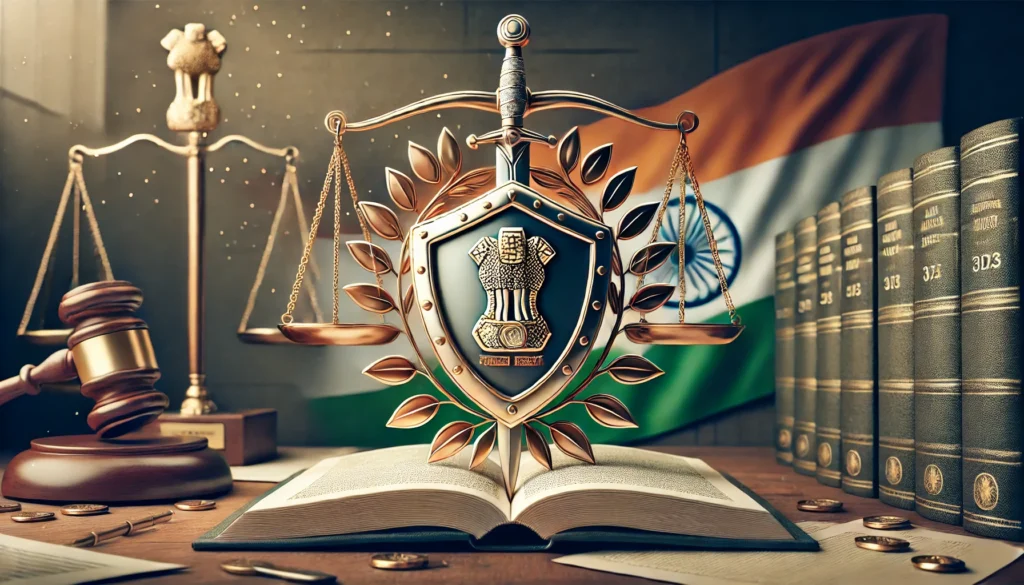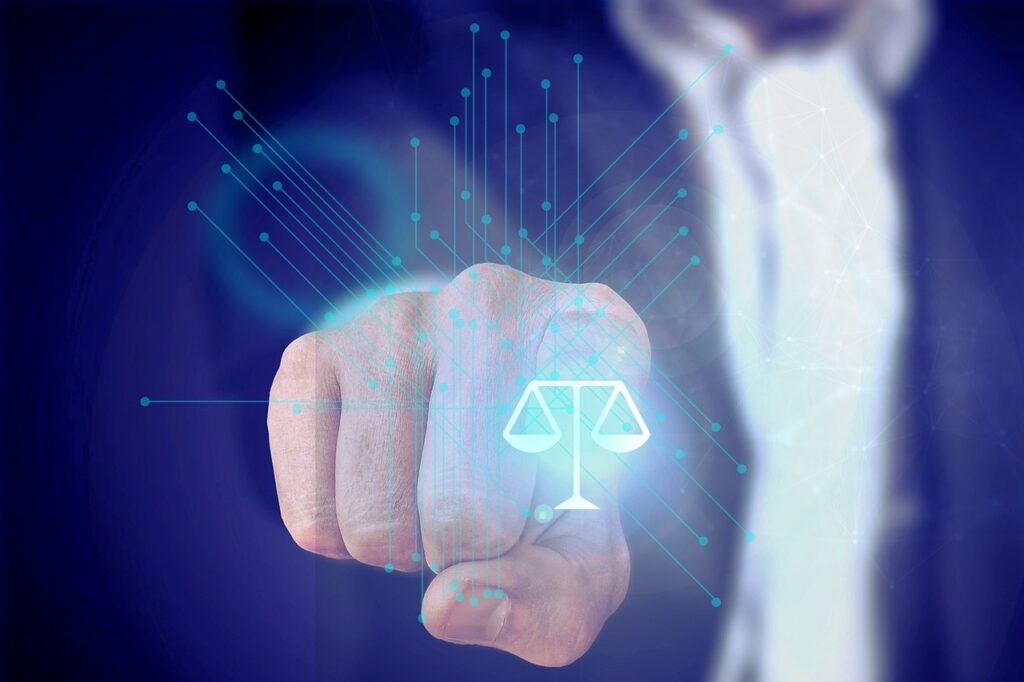Published on 21st June 2025
Authored By: K. Saitarun
VIT Chennai
ABSTARCT
In India, forensic evidence has emerged as a crucial element of criminal trials, helping to ensure convictions and avoid injustices. Specifically focussing on the Code of Criminal Procedure, the Indian Evidence Act, and pertinent constitutional protections under Article 20(3), this paper examines the Indian legal framework governing the admissibility and application of forensic science. Additionally, it examines the swift advancement of forensic technologies in India, from automated fingerprint systems to DNA profiling and cyber forensics, while critically assessing systemic issues such as lab backlogs, inconsistent evidence collection, a lack of professional training, and procedural errors that frequently compromise the value of such evidence. The paper’s doctrinal and empirical analysis leads to the conclusion that, although forensic science has the potential to revolutionise India’s criminal justice system, its effective application necessitates legal clarity, infrastructure investment, and standardised protocols in order to uphold constitutional guarantees and foster scientific integrity in judicial decision-making.
INTRODUCTION
In Indian criminal trials, forensic evidence is becoming more and more important since it frequently offers scientific proof that connects a suspect to a crime or clears the innocent. The Supreme Court stated that DNA, fingerprints, and even bite marks “sealed the fate” of the prisoners, describing this evidence as accurate and corroborative in the high-profile case of the 2012 Delhi gang rape (Nirbhaya case)[1] which highlighted the power of forensics. On the other hand, Aarushi Talwar’s double murder trial[2] in 2008 brought to light the negative effects of improperly handled evidence; tainted samples and conflicting expert testimony led to acquittals. These illustrations highlight forensic science’s advantages and disadvantages in India’s legal system. This article discusses the Indian perspective on the role of forensic evidence, from the legal framework under the Indian Evidence Act and criminal procedure laws to major judicial decisions and cases, recent technological developments, and systemic issues (from lab capacity to admissibility issues).
LEGAL FRAMEWORK GOVERNING FORENSIC EVIDENCE IN INDIA
The basis for admitting forensic expert testimony is provided by the Indian Evidence Act (IEA), 1872 and now in the Bharatiya Sakshya Adhiniyam (BSA), 2023. Expert opinion is specifically covered in Sections 45 to 51 of the IEA[3], 1872 and Sections 39 to 45 of BSA[4], 2023. This is an exception to the general rule that witnesses may only testify to facts that they directly perceive. According to Section 45, the views of “persons specially skilled” in a field are relevant when a court is required to form an opinion on a matter of science or art, including forensic science. To put it another way, the court may benefit from the opinion of a qualified forensic expert on issues like DNA analysis, fingerprint comparison, ballistics, toxicology, etc. In essence, the expert is a third-party witness offering scientific conclusions.
Significantly, the Evidence Act was revised due to emerging technologies:
Section 45A was added to provide for the “Opinion of Examiner of Electronic Evidence”, in which the report of a government-approved digital evidence examiner is made admissible regarding issues concerning information sent or stored in computers. This supplements Section 65A and 65B of the IEA, which regulate the admissibility of electronic records; Section 65B(4) notoriously requires a Section 65B certificate for computer outputs[5] to be admissible as evidence. The Supreme Court has been adamant about following these electronic evidence rules strictly. In Arjun Panditrao Khotkar v. Kailash Kushanrao Gorantyal (2020)[6], the Court reaffirmed that a Section 65B certificate is necessary for admissibility of electronic data. Aside from expert witnesses, there are other IEA provisions that enable forensic evidence: Section 73 allows a court to order an individual to give handwriting or signature samples for comparison purposes, and Section 27 (while not a forensic technique in itself) is frequently invoked when police find physical evidence (such as a gun or blood-soaked clothing) after interviewing an accused.
Procedural enablers for gathering forensic evidence during investigations are included in the CrPC (Code of Criminal Procedure), 1973 and Bharatiya Nagarik Suraksha Sanhita, 2023. A police officer may ask a registered medical professional to examine an arrested person under Section 53 of the CrPC and Sec 51 of the BNSS[7] “and such other tests” as needed. Indian courts have construed this to include gathering bodily fluids for DNA testing. Actually, “DNA profiling” is specifically listed as a component of medical examination in cases of sexual offences in the explanations added to Sections 53 and 53A CrPC and Sec 52 of BNSS. In order to integrate DNA and forensic medical evidence in such prosecutions, Section 164A of CrPC and Section 184 of BNSS[8], provides for the medical examination of rape survivors, while Section 53A of CrPC and Section 52 of BNSS[9] expressly requires a thorough medical examination of an individual accused of rape, including the collection of forensic samples.
Procedural facilitators for the collection of forensic evidence in investigations are specified in the CrPC. A police officer can request a registered medical practitioner to conduct a medical examination of an arrested individual under Section 53 of the CrPC, “and such other tests” as required. Indian courts have interpreted this to include the collection of bodily fluids for DNA testing.
Article 20(3)[10] advocates for the protection against self-incrimination provided by Article 20(3) of the Constitution must be taken into account when discussing forensic evidence in India. No accused person may be forced “to be a witness” against themselves, according to this article. This has been interpreted by the Supreme Court to differentiate between physical evidence and testimonial evidence, which discloses the contents of one’s mind. An 11-judge panel ruled in the case of State of Bombay v. Kathi Kalu Oghad (1961)[11] that obtaining tangible evidence from an accused person, such as handwriting samples, voice exemplars, or fingerprints, does not equate to forcing them to provide self-incriminating testimony. The Court reasoned that since providing finger impressions or signatures does not entail the voluntary transfer of knowledge, it is a mechanical act rather than a “personal testimony.”
This principle has opened the door to application of forensic methods in physical sample involvement. In contrast, in Selvi & Ors. v. State of Karnataka (2010)[12], the Supreme Court deliberated on the use of narco-analysis (truth serum interrogation) and polygraph tests and brain electrical activation profiling against a person in a state of detention and held that these tests do contravene Article 20(3) when utilized without consent. The Court emphasized that such tests compel the subject to express personal knowledge by “testimonial responses” and therefore constitute compelled testimony. As a result, involuntary narco-analysis or lie detector tests are inadmissible. But the Court did leave it open that voluntary submission to such tests could be distinguished – although even then, the findings are not regarded as confessions in law, but merely as leads to investigation. In 2019, the Supreme Court in Ritesh Sinha v. State of U.P.[13] reconsidered the question of voice exemplars and, drawing on Kathi Kalu Oghad and the CrPC scheme, concluded that the taking of a voice sample (for spectrographic examination) without permission does not violate Article 20(3). The Court empowered magistrates to order voice samples even though there was no express statutory provision, drawing an analogy with the settled practice of handwriting samples. In total, India’s constitutional doctrine allows for the collection of physical and biological evidence from an accused (fingerprints, DNA swabs, voice samples, etc.) provided that it is not through coerced communicative acts. The statutory framework of the IEA and CrPC combined with this doctrine regulates how forensic evidence is collected and introduced at trial.
JUDICIAL INTERPRETATION AND TECHNOGICAL ADVANCEMENTS
From early scepticism to cautious acceptance, Indian courts have been instrumental in determining the admissibility and probative value of forensic evidence. DNA profiling is one of the most powerful tools; its scientific accuracy has made it a gold standard. The Supreme Court criticised the trial court for speculating against expert findings in Santosh Kumar Singh v. State through CBI (2010)[14], upholding conviction based on uncontested DNA evidence. In a similar vein, the Court upheld the validity of DNA testing using approved techniques like STR and Y-STR in Anil v. State of Maharashtra (2014)[15]. Yet, there is still caution, so in Premjibhai Khasiya v State of Gujaraj[16] (2009) and Manoj v. State of M.P. (2022)[17] emphasized that DNA matches should have statistical context and adequate chain of custody. In Rahul v. State of Delhi (2022)[18], the Court acquitted accused because of doubts regarding sample handling, demonstrating that forensic evidence should be as carefully collected as it is examined.
Electronic forensics has developed in the digital realm as a result of significant cases. According to the rulings in Anvar P.V. v. P.K. Basheer (2014) [19]and Arjun Panditrao Khotkar v. Kailash Kushanrao Gorantyal (2020)[20], electronic records must have a Section 65B certificate in order to be admitted. As a result, the evidentiary standards for digital devices, CCTV, and call data records have been strengthened. Ritesh Sinha v. State of U.P. established the validity of voice spectrography, allowing for the legitimate collection of voice samples in accordance with the Identification of Prisoners Act, 2022[21]. Additionally, automated evidence comparison across jurisdictions is supported by initiatives like the Crime and Criminal Tracking Network and Systems (CCTNS)[22] and the National Automated Fingerprint Identification System (NAFIS)[23].
At the same time, forensic capacity and training have been greatly increased by the establishment of the National Forensic Sciences University (NFSU)[24] and government programs like requiring forensic analysis for crimes punishable by six years or more (per MHA, 2022).
SYSTEMATIC CHALLENGES IN THE USE OF FORENSIC EVIDENCE
Even though forensic science is becoming more and more important in Indian criminal trials, a number of structural problems prevent it from being used to its full potential. The biggest issue is the overwhelming backlog in Forensic Science Laboratories (FSLs); in 2023[25], Delhi’s FSL alone had more than 20,000 pending cases. Investigations and trials are halted by these delays, and courts have even penalised state authorities for protracted delays in important reports. In Thana Singh v. CBN (2013)[26], the Supreme Court ordered the government to increase lab capacity; however, staff, funding, and infrastructure shortages still exist.
Additionally, there is still inconsistency in quality and standardisation. As demonstrated in Hari Om @ Hero v. State of U.P. (2021)[27], courts have rejected evidence because of inadequate documentation and procedural errors, and not all labs adhere to ISO-certified protocols.
Calls for a National Forensic Science Regulatory Body continue, alongside the need for expert courtroom training. At the investigative level, inadequate police training results in contaminated or improperly collected evidence, particularly in rural areas. Though kits and mobile units are being introduced, logistical gaps remain.[28]
CONCLUSION
With the help of statutes like the Indian Evidence Act and the CrPC, forensic evidence has emerged as a crucial component of criminal trials in India. As long as protocols are followed correctly and expert opinions are reliable, courts are depending more and more on scientific tools like DNA profiling and digital forensics. However, its efficacy is constrained by systemic problems such as lab backlogs, inconsistent standards, and inadequate evidence collection.
Progress is evident in recent reforms, such as the requirement for forensic use in serious crimes and increased training. However, India needs to make investments in infrastructure, standardisation, and expert capacity in order to fully realise the potential of forensic science. In the end, by establishing guilt and shielding the innocent, forensic evidence can improve justice. In order to guarantee fair trials founded on trustworthy, scientific evidence, India’s legal system must change as technology advances.
REFERENCES
[1] Mukesh & Anr. v. State for NCT of Delhi, (2017) 6 S.C.C. 1 (India)
[2] Nupur Talwar v. C.B.I., (2012) S.C.C. OnLine All 1983 (India)
[3] Indian Evidence Act, No. 1 of 1872, Section 45–51 (India).
[4] Bharatiya Sakshya Adhiniyam, No. 47 of 2023, Section 39–45, Gazette of India
[5] Id. § 45A; Section 65A–65B.
[6] Arjun Panditrao Khotkar v. Kailash Kushanrao Gorantyal, (2020) 7 S.C.C. 1 (India).
[7] Code of Criminal Procedure, 1973, Section 53; Bharatiya Nagarik Suraksha Sanhita, 2023, Section 51 (India).
[8] Code of Criminal Procedure, 1973, Section 164A; Bharatiya Nagarik Suraksha Sanhita, 2023, Section 184 (India).
[9] Code of Criminal Procedure, 1973, Section 53A; Bharatiya Nagarik Suraksha Sanhita, 2023, Section 52 (India).
[10] India Const. art. 20, cl. 3.
[11] State of Bombay v. Kathi Kalu Oghad, A.I.R. 1961 S.C. 1808 (India)
[12] Selvi & Ors. v. State of Karnataka, (2010) 7 S.C.C. 263 (India)
[13] Ritesh Sinha v. State of U.P., (2019) 8 S.C.C. 1 (India).
[14] Santosh Kumar Singh v. State through CBI, (2010) 9 S.C.C. 747 (India)
[15] Anil v. State of Maharashtra, (2014) 12 S.C.C. 280 (India)
[16] Premjibhai Khasiya v. State of Gujarat, (2009) 11 S.C.C. 625 (India)
[17] Manoj v. State of M.P., (2022) 10 S.C.C. 1 (India)
[18] Rahul v. State of Delhi, (2022) S.C.C. OnLine SC 1501 (India)
[19] Anvar P.V. v. P.K. Basheer, (2014) 10 S.C.C. 473 (India)
[20] Arjun Panditrao Khotkar v. Kailash Kushanrao Gorantyal, (2020) 7 S.C.C. 1 (India)
[21] Identification of Prisoners Act, No. 11 of 2022, Gazette of India
[22] Ministry of Home Affairs, Crime and Criminal Tracking Network and Systems (CCTNS)
[23] National Crime Records Bureau, National Automated Fingerprint Identification System (NAFIS)
[24] National Forensic Sciences University Act, No. 32 of 2020, Gazette of India
[25] Richa Banka, Delhi’s FSL Has 20,000-Plus Cases Pending, Hindustan Times (Oct. 2023)
[26] Thana Singh v. Central Bureau of Narcotics, (2013) 2 S.C.C. 590 (India).
[27] Hari Om @ Hero v. State of U.P., (2021) 1 S.C.C. 1 (India)
[28] Ministry of Home Affairs, Guidelines on Forensic Kits for Sexual Assault Cases, (2020).




